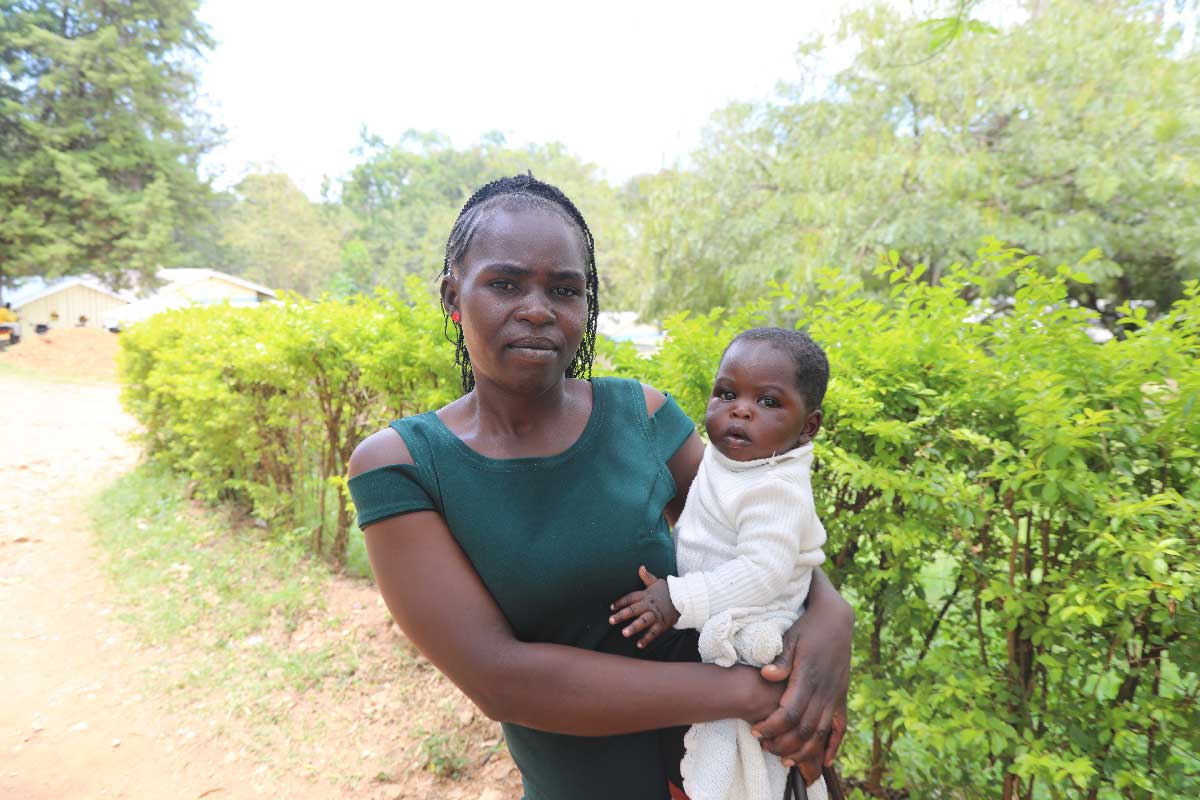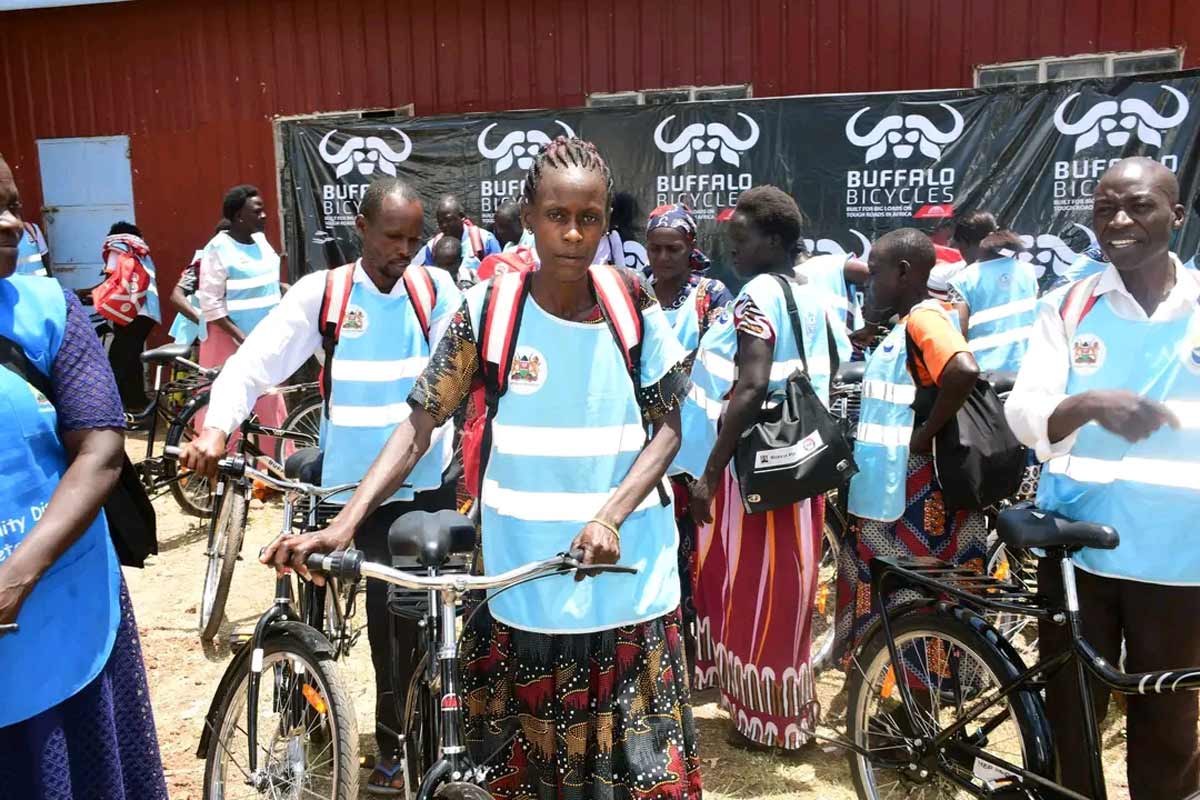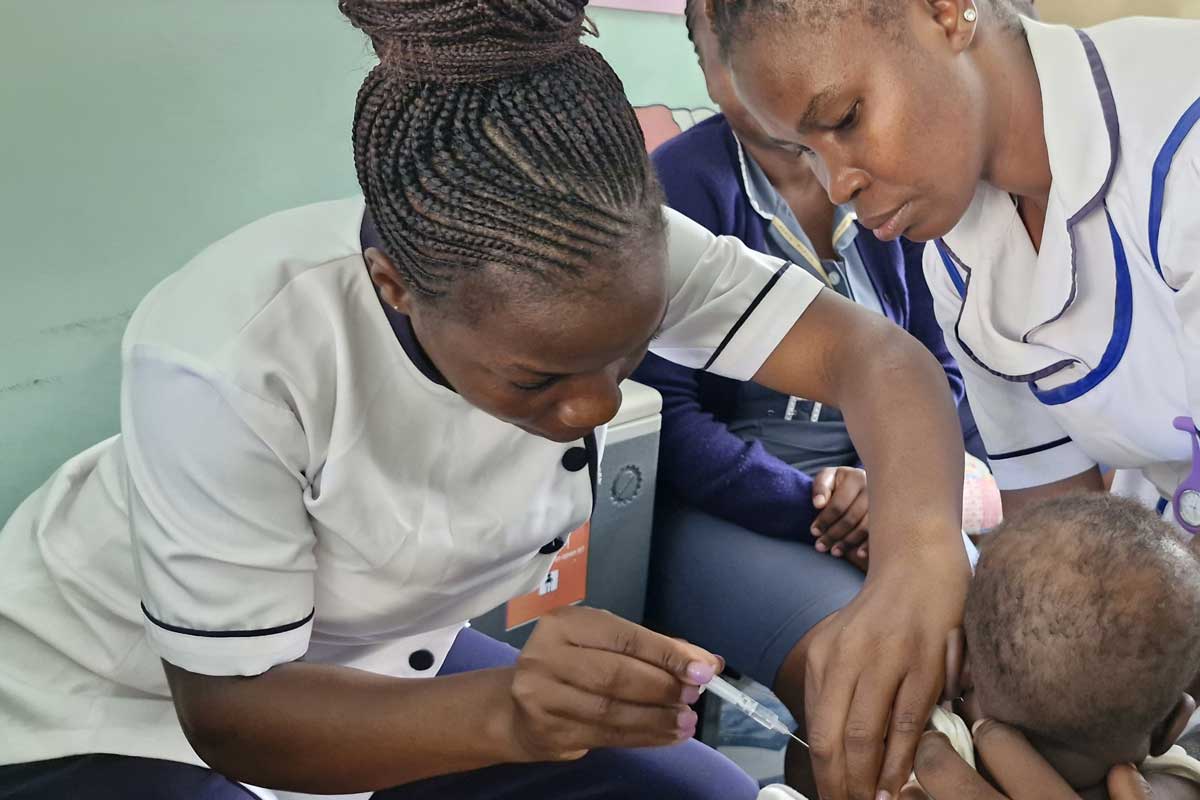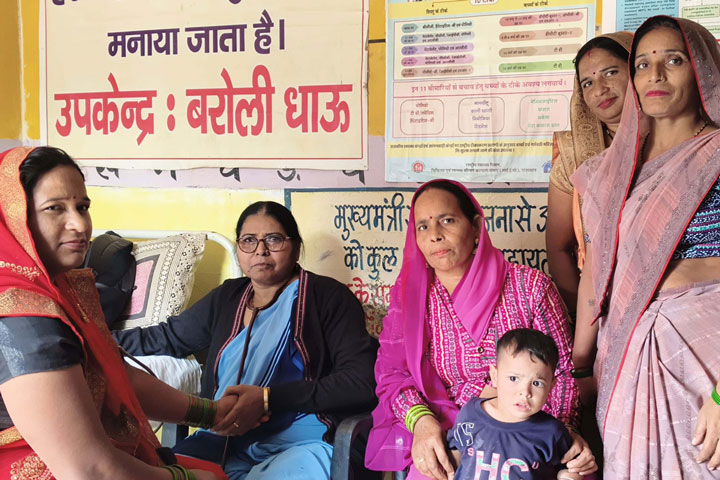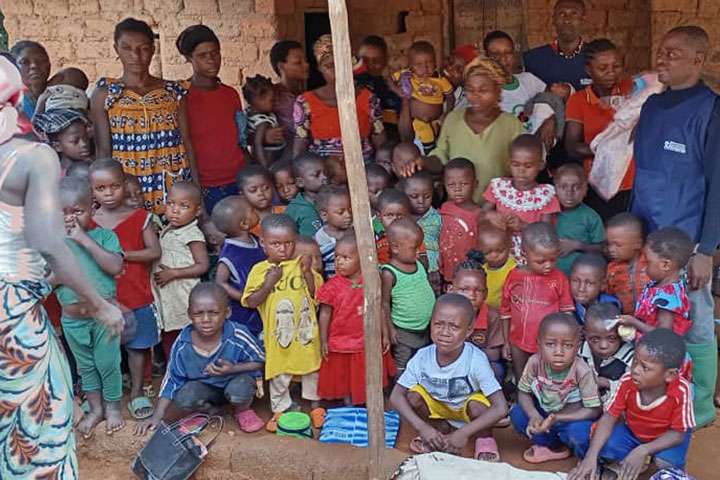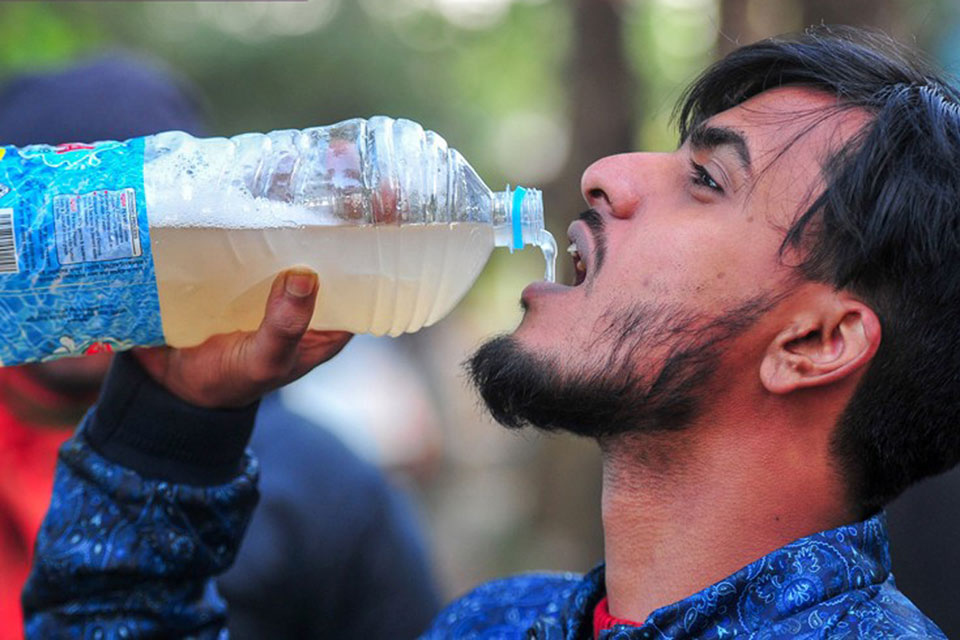Kenya farmers take up fishing as Lake Victoria overflows, threatening human health
After their croplands become submerged, communities on the lakeshore take to the water, facing threats that include snakes and waterborne pathogens.
- 14 January 2025
- 6 min read
- by Angeline Anyango
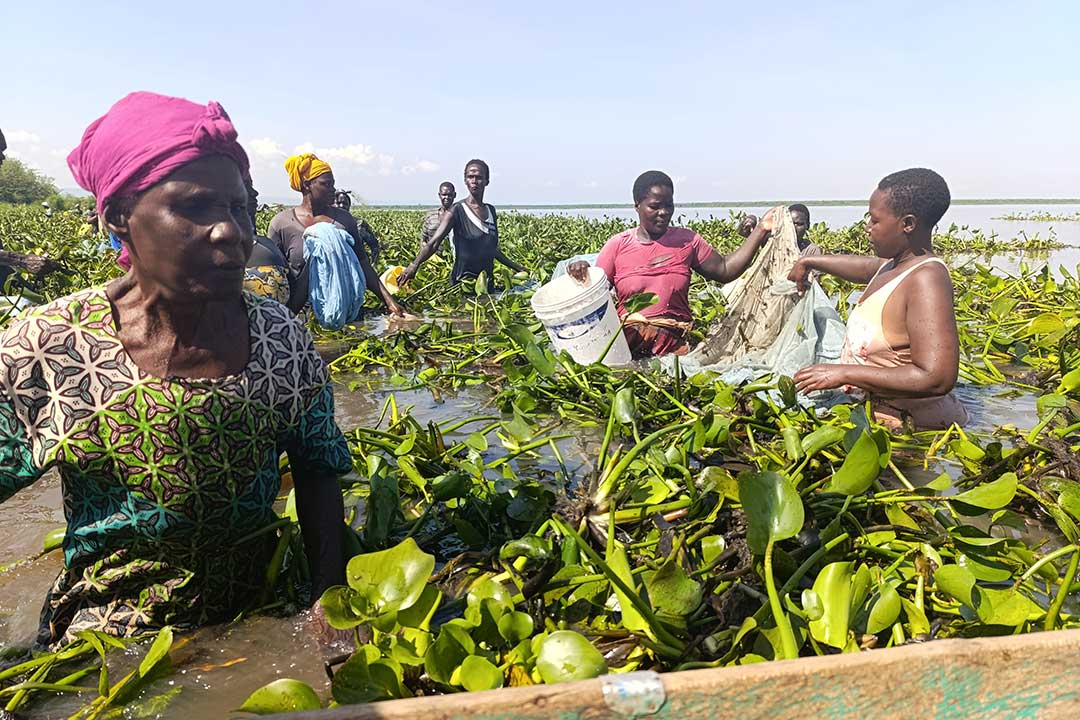
At 07:00 on Maembe Beach, on the shore of Lake Victoria in Western Kenya, a sharp shriek brings everything to a momentary stop.
The sunrise has cast a yellowish glow, dully reflected by the murky waters of the lake, now stirred up by a large number of people in the waters.
“I was lucky to have a relative who paid my medical bills because whatever I make from the lake can barely sustain my family, leave alone saving for my medical bills.”
– Clementine Anyango, nyapus fisher and bilharzia patient
There are possibly hundreds of them – the majority of them women – wading into the floating hyacinth, some shoulder-deep. They are harvesting a slimy, thumb-sized fish called Clarias gariepinus fingerlings, locally known as nyapus.
The shriek has come from one unfortunate woman who has bumped into a swimming snake. A handful of men rush in and subdue the snake, and, strangely enough, in moments everyone is back to business.

Photo credit: Angeline Anyango
Making a living amid shifting tides
Nyapus are collected here, and sold on to middlemen or their agents for the export market in neighbouring Tanzania and Uganda. The little fish are in high demand: large-scale fisheries use them as bait for larger, more commercially valuable fish.
They live among the roots of the water hyacinth, making their locations subject to wind patterns that shift the floating weed from one location to another. This constant movement forces locals to follow the drifting hyacinth wherever it goes in their quest to harvest the fish.
Working in teams, the lakeside fishers cast small nets over the weed, drag it to shore and meticulously conduct a search on the roots. It takes one fisher hours, and several trips back to into the risky water for a hoped-for payoff of about 200 Kenyan shillings (US$ 1.5).
Clementine Anyango is one of the women on the hunt today. “In 2019, at the onset of the heavy rains, I was forced to flee my home when Lake Victoria burst its banks with the waters spilling to my farm and house,” says Anyango. Her crops were swept downstream.
For weeks, the family of eight had to solely rely on the income of Anyango’s husband, who is a fisherman.
“My husband could no longer shoulder the household needs. I had to look for ways to offer the little support I could,” she says.
Need pushed her into fishing nyapus – what she calls an “unforgiving business”.
Extreme rainfall exacerbates waterborne threats
Snakes are not the only peril. Late last year, Clementine was diagnosed with bilharzia, a snail-borne parasitic disease also called schistosomiasis, after she suffered diarrhoea, a swollen and painful stomach, painful joints and a constant headache.
Sadly, people here say that few bilharzia patients get proper treatment. Due to lack of funds, locals are forced to wait for the medical outreaches conducted once a year.
“I was lucky to have a relative who paid my medical bills because whatever I make from the lake can barely sustain my family, leave alone saving for my medical bills,” she says.
The Kisumu County Director for Climate Change, Evans Gichana, says one of the risk factors for contamination, lake backflow – the temporary reversal of discharge at the outlet of a lake – is a result of extreme rainfall, itself spurred by global climate change.
“During heavy rains, the large water volumes can no longer be contained in the lake due to the solid deposits causing the waters to outflow,” he says.
The work is hard on the body in general, says Hellen Angira, who is elderly. Due to old age she can only manage to get onto the waters for a short period of time.
“Even in the short stays, I still suffer backaches. The water is rather cold for my taking, and I have been diagnosed and treated of pneumonia,” she says.
Even away from the lakeshore, stagnating waters are a major health risk to the community at West Nyakach Location, Kisumu County, she points out.
The waters, she says, act as a breeding point for mosquitoes, which transmit dangerous diseases including malaria and dengue.
“I stay with my two grandchildren. Even though we sleep under treated mosquito nets, the insects always start to bite as early as 6pm and go late until 7am,” says Angira.
“Our waters are also contaminated, and those who cannot afford clean water risk contracting typhoid and dysentery,” she says.
Have you read?
Pushed off the land
Mark Okoth is yet another resident of a flood-prone village whose family’s income largely depends on fishing the very lake that imperilled his former livelihood.
Half his farm was ravaged by lake backflow, and farming the remainder has been made almost impossible due to human-wildlife conflict.
“The lake also swallowed the grazing lands for the hippopotamuses who now invade our farms in search of food,” says Okoth.
Locals say that lake backflow was rare and limited in its effects over the second half of the 20th century. That’s changed.
“Over 3,000 acres of land are also still submerged in the waters. This has made life quite difficult for the locals who largely depended on the farms for survival.”
– Nyakach Location Chief, Seth Oluoch
“In 2019, the lake had yet again experienced a major outflow due to the heavy rains experienced in Kenya,” says Okoth.
A report released by the Lake Victoria Basin Commission (LVBC) the following year revealed that the volume of the freshwater lake had increased above the 13.41-metre mark recorded in 1964. Rising lake levels had been reported in Kenya, Uganda and Tanzania.
Then-Commission Executive Secretary of LVBC Ali Matano says abnormal heavy rains reported in Kenya, Tanzania, Uganda, Burundi and Rwanda had caused the water to rise – the countries’ rivers channelling their waters into the lake.
He explained that the lake’s major outlet, the Nile, could not sustain the outflow, leading the lake to burst its banks.
Back in Kenya, lake backflow was reported again in April 2024 along a number of beaches in Kisumu county, leaving behind destroyed properties, submerged homes and farmlands, while livestock and poultry were swept downstream.
The Nyakach Location Chief, Seth Oluoch, says the lake backflow has seen hundreds of residents displaced from their homes.
He says a number of homesteads have also been abandoned by the residents, who went to seek refuge, and never came back.
“Over 3,000 acres of land are also still submerged in the waters. This has made life quite difficult for the locals who largely depended on the farms for survival,” he says, adding that the lake backflow also has a number of health effects among the locals.
A junior health staffer at the Sango Rota dispensary, the nearest health facility for communities fishing off Maembe Beach, told VaccinesWork that 70% of the locals who visit the facility are treated for waterborne diseases including bilharzia, typhoid, dysentery and malaria.
Kisumu Climate Change director Gichana emphasises that desilting Lake Victoria to remove accumulated solid deposits will be a critical step in addressing the seasonal flooding and backflow that continue to devastate communities along its shores. He explains that the build-up of silt and waste carried by rivers into the lake has significantly reduced its capacity to contain rising water levels, especially during periods of heavy rainfall.
In addition to desilting, Gichana advocates for the construction of the proposed Koru-Soin Dam along River Nyando, one of Lake Victoria’s major tributaries in Kenya.
The dam, he says, would play a vital role in regulating the river’s flow, preventing excessive water from overwhelming the lake during heavy rains, and ultimately reducing the frequency and severity of the backflow. These interventions, he notes, are essential for protecting livelihoods and ensuring the resilience of communities around the lake.
